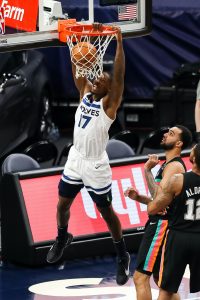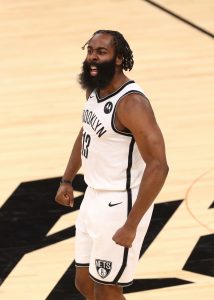Relying on the trade machines at ESPN.com or TradeNBA.com may be the simplest way for NBA fans to verify whether or not a trade will work under league rules, but it’s worth examining the primary tool in the NBA’s Collective Bargaining Agreement that determines a trade’s viability — the traded player exception.
Teams with the cap room necessary to make a trade work don’t need to abide by traded player exception rules. However, if a team makes a deal that will leave its total salary more than $100K above the salary cap, the club can use a traded player exception to ensure the trade is legal under CBA guidelines.
There are two different types of traded player exceptions used in NBA deals. One applies to simultaneous trades, while the other applies to non-simultaneous deals.
In a simultaneous trade, a team can send out one or more players and can acquire more salary than it gives up. In a non-simultaneous trade, only a single player can be dealt, and the team has a year to take back the equivalent of that player’s salary, plus $100K.
Let’s look into each scenario in greater detail….
Simultaneous:
In a simultaneous trade, different rules applies to taxpaying and non-taxpaying clubs. A non-taxpaying team can trade one or more players and take back….
- 175% of the outgoing salary (plus $100K), for any amount up to $6,533,333.
- The outgoing salary plus $5MM, for any amount between $6,533,333 and $19,600,000.
- 125% of the outgoing salary (plus $100K), for any amount above $19,600,000.
Here’s a recent example of these rules in effect:
 Last November, the Timberwolves sent Jacob Evans, Omari Spellman, and a second-round pick to the Knicks in exchange for Ed Davis.
Last November, the Timberwolves sent Jacob Evans, Omari Spellman, and a second-round pick to the Knicks in exchange for Ed Davis.
Evans and Spellman were earning a combined $4,005,600 in 2020/21, which meant Minnesota was eligible to take back up to $7,109,800 by aggregating their salaries — that figure works out to 175% of their combined salaries, plus $100K, as noted in the first rule listed above. Since Davis is earning $5,005,350, he comfortably fit within that limit.
If Evans’ and Spellman’s salaries had totaled more than $6,533,333, they would’ve been subject to the second rule above. If they’d combined to earn at least $19,600,000, the third rule would’ve applied.
For taxpaying teams, the traded player exception rules for a simultaneous trade are simpler, albeit more restrictive. A taxpaying club can send out one or more players and take back 125% of the outgoing salary, plus $100K, no matter how much – or how little – outgoing salary is involved. If the Warriors were to trade Kelly Oubre‘s $14,375,000 expiring contract, for instance, they could take back up to $18,068,750.
In simultaneous transactions, the traded player exception is used to instantly complete the deal, leaving no lingering loose ends. This form of the traded player exception generally isn’t what we’re talking about if we say a team “has a trade exception” available to use. Those outstanding trade exceptions come as a result of non-simultaneous deals.
Non-simultaneous:
In non-simultaneous deals, a team can trade away a single player without immediately taking salary back in return. The team then has up to one year in which it can acquire one or more players whose combined salaries amount to no more than the traded player’s salary (plus $100K).
For instance, before the Knicks sent Ed Davis to Minnesota, they acquired him from the Jazz – along with a pair of second-round picks – in exchange for just cash. From Utah’s perspective, that was a non-simultaneous trade, allowing them to create a traded player exception worth Davis’ salary ($5,005,350).
The Jazz will have a year to use that exception to acquire one or more players whose salaries total up to $5,105,350 (Davis’ salary, plus $100K). If they don’t use the full trade exception within a year, it will expire.
Putting the two together:
When evaluating an NBA trade, it’s worth remembering that the two teams can view the deal entirely differently and that they’re allowed to divide a single trade into multiple parts to maximize their flexibility. For example, one team could consider a trade simultaneous, while the other team breaks the transaction down into two separate trades, one simultaneous and one non-simultaneous.
Let’s take a look at a recent real-life example, examining the complex four-team trade involving the Rockets, Nets, Cavaliers, and Pacers that sent James Harden to Brooklyn.
From the Nets’ perspective, the trade broke down as follows:
- Traded Caris LeVert ($16,203,704), Taurean Prince ($12,584,375), Jarrett Allen ($3,909,902), and Rodions Kurucs ($1,780,152) for Harden ($41,254,920).
- This trade is a simultaneous one for the Nets, who had to pool together a ton of salary to match Harden’s huge cap figure. As a taxpaying team, Brooklyn had to send out a minimum of $32,923,936 in salary in order to meet the 125% + $100K rule. LeVert, Prince, and Allen wouldn’t quite get their on their own (they make a combined $32,697,981), which is why a fourth player (Kurucs) had to be included.
Here’s how it looked from the Rockets’ perspective:
- Traded Harden ($41,254,920) for Victor Oladipo ($21,000,000) and Dante Exum ($9,600,000).
- This segment of the trade, from the Rockets’ perspective, is non-simultaneous. Since they had to accommodate Oladipo’s and Exum’s incoming salaries using Harden’s outgoing salary, they weren’t able to create a truly massive traded player exception, but they did generate one worth the difference between Harden’s salary and the combined Oladipo/Exum figure — it worked out to $10,654,920.
- Acquired Kurucs ($1,780,152) via a traded player exception.
- The Rockets possessed a handful of modest trade exceptions from deals they made at the 2020 trade deadline. One of those exceptions, created when Houston traded Nene to Atlanta, was worth about $2.56MM, which the team used to absorb Kurucs’ salary. If the Rockets hadn’t had an exception on hand, Kurucs’ salary would’ve been added to Oladipo’s and Exum’s above, slightly reducing the value of the team’s newly-created TPE for Harden.
Here’s how the Cavaliers completed the trade:
- Traded Exum ($9,600,000) for Prince ($12,584,375).
- In a simultaneous trade, the Cavaliers used Exum’s outgoing salary to match Prince’s. Cleveland could have taken back up to $14,600,000 (Exum’s salary + $5MM).
- Acquired Allen ($3,909,902) via a traded player exception.
- Prince and Allen earn a total of $16,494,277, exceeding the amount the Cavs could’ve acquired for Exum alone. Fortunately, Cleveland had a traded player exception available that was perfectly sized for Allen. That exception, worth $3,837,500, was created in last season’s Jordan Clarkson trade and was due to expire in February. Because a team gets $100K in wiggle room when using a non-simultaneous TPE, Allen’s salary was able to narrowly fit.
And here’s the Pacers’ perspective:
- Traded Oladipo ($21,000,000) for LeVert ($16,203,704).
- This is the simplest swap of the bunch, and is a non-simultaneous trade. Because LeVert is earning less than Oladipo, the Pacers have a year to make up the difference (plus $100K), having generated a $4,796,296 traded player exception.
More notes on traded player exceptions:
- For contracts signed under the NBA’s current Collective Bargaining Agreement, a team’s outgoing salary for matching purposes is the guaranteed salary rather than the total salary. For example, a player with a $2MM partial guarantee on a $10MM salary would only count for $2MM for salary-matching purposes. Between the end of a team’s season and June 30, the outgoing salary for a traded player is the lesser of his full current-season salary and his guaranteed salary for the next season. We have more details on this rule in a separate glossary entry.
- When determining whether a team is over the cap or the luxury tax line for traded player exception purposes, the team’s total salary after the trade is the deciding factor.
- Trade exceptions created in non-simultaneous trades can’t be combined with one another, with other exceptions, or with a player’s salary; they can’t be used to sign a free agent (except in a sign-and-trade); and they can’t be traded outright to another team.
- A trade exception generated in a sign-and-trade can sometimes be subject to base year compensation rules. In that case, the player’s outgoing salary for trade purposes is either his previous salary or 50% of his new salary, whichever is greater. That’s why the Nuggets only created a $9,525,000 in their Jerami Grant sign-and-trade, despite the fact that his first-year salary with the Pistons is $19,050,000.
- Teams that are under the cap before a trade and go over the cap as a result of the trade can’t create a trade exception as a result of that deal.
- For salary-matching purposes, future draft picks or the draft rights to an unsigned player aren’t taken into consideration.
The traded player exception is one of the CBA’s more complicated tools and can make it challenging for over-the-cap teams to navigate the trade market. It’s undoubtedly simpler to use an online trade machine to determine whether a deal is legal, but examining the rules and figuring out exactly how a blockbuster trade breaks down can provide rewarding insight into an NBA club’s management of its cap.
Note: This is a Hoops Rumors Glossary entry. Our glossary posts will explain specific rules relating to trades, free agency, or other aspects of the NBA’s Collective Bargaining Agreement. Larry Coon’s Salary Cap FAQ was used in the creation of this post.
Earlier versions of this post were published in 2012, 2018, and 2020.
Photos courtesy of USA Today Sports Images.
I suggest that the worst teams like Rockets or Wolves trade players for TPE
Don’t waste money
Salary dump
No understanding of this. A TPE can be used or created in a trade, it is not something that one team trades to another team.
For first note of more notes on traded player exceptions is only in Simultaneous or both in simultaneous and non-simultaneous
Both.